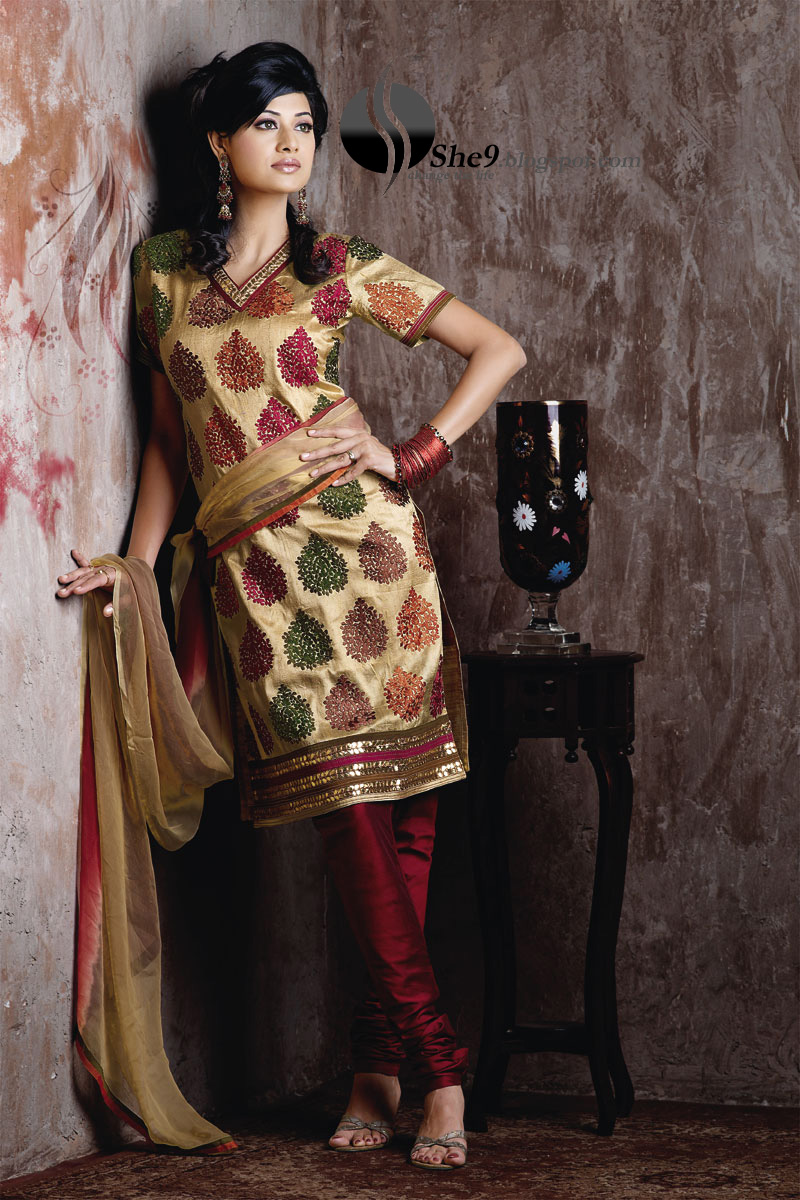Salwar kameez is the traditional dress worn by various peoples of South Asia. Salwar are loose trousers and the kameez is a long shirt.
It is the usual everyday dress for both men and women in Pakistan where it may be transliterated into English as shalwar qamiz. It is also popular in India and Bangladesh and often worn in Afghanistan. Some versions are sometimes called a Punjabi suit, after the Indus valley area called the Punjab. In Gujarat it is usually called a Zabho.
Salwars are loose pajama-like trousers. The legs are wide at the top, and narrow at the bottom. The legs are pleated or gathered into a waistband with a drawstring. The pants can be wide and baggy, or they can be cut quite narrow, on the bias. In the latter case, they are known as churidar.
The kameez is a long shirt or tunic. The side seams (known as the chaak) are left open below the navel, which gives the wearer greater freedom of movement. The kameez is usually cut straight and flat; older kameez use traditional cuts, as shown in the illustration; modern kameez are more likely to have European-inspired set-in sleeves. The tailor's taste and skill are usually displayed not in the overall cut, but in the shape of the neckline and the decoration of the kameez.
When women wear the salwar kameez, they usually wear a long scarf or shawl called a dupatta around the head or neck. For Muslim women, the dupatta is a less stringent alternative to the chador or burqa (see hijab). For Hindu women (especially those from northern India, where the salwar kameez is most popular), the dupatta is useful when the head must be covered, as in a temple or the presence of elders. For other women, the dupatta is simply a stylish accessory that can be worn over one shoulder or draped around the chest and over both shoulders.


























No comments:
Post a Comment